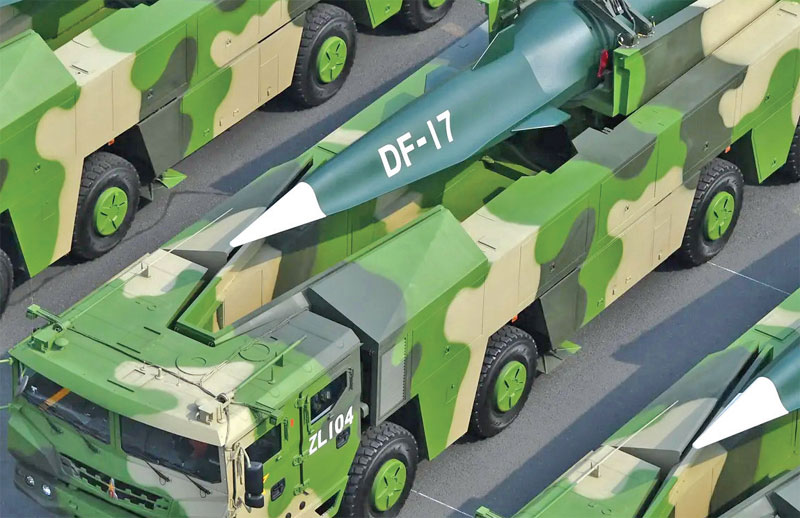The Age of Hypersonics
Prasun K. Sengupta
Although both the United States and Russia are believed to have possessed operational hypersonic missiles since the early 1990s, it was Russia that first made its operational usage when it fired a few 9K720 Iskander-M surface-to-surface battlefield support missiles (SS-BSM) in a short war with Georgia in 2008. Developed by the Kolomna-based KBM, the Mach 6 Iskamder-M is being produced by the Votkinsk Plant State Production Association (Votkinsk), with the Volvograd-based ‘Barricades’ Production Association making the ground support equipment.

DF-17 TBM with HGV-2
The air-launched Mach 10 version of this SS-BSM is known as the Kh-47M2 Kinzhal (‘Dagger’) and its range is 2,000km when carried by the MiG-31K and 3,000km when carried by the Tu-22M3. In May 2018, ten Kinzhal-armed MiG-31Ks were on experimental combat duty and they were ready to be deployed. By December 2018, aircraft armed with Kinzhals had conducted 89 sorties over the Black Sea and the Caspian Sea.
By February 2019, crews of the MiG-31K Kinzhal-carriers had performed more than 380 training sorties, of which at least 70 used mid-air refuelling. The Kinzhal made its public debut in August 2019. In June 2021, a Kinzhal was launched by a MiG-31K from Syria’s Khmeimim air base against a ground target. A separate aviation regiment has been formed, armed with MiG-31K aircraft with the Kinzhal hypersonic missile in 2021. On March 18 this year, Kinzhal missiles were fired to destroy an underground weapons depot of the Ukrainian armed forces in Deliatyn.
Another hypersonic missile that is nearing operational deployment by Russia is the 3M22 Zircon, developed by NPO Mashinostroyeniya. This is a manoeuvring, winged hypersonic cruise missile with a lift-generating center body. A solid-fuelled booster stage accelerates it to supersonic speeds, after which a scramjet motor with JP-10 liquid-fuel in the second stage accelerates it to hypersonic speeds. The first prototypes were test-launched from a Tu-22M3 bomber in 2012. Launches from a ground-based platform followed in 2015, with first success achieved in 2016.
In April 2017, the Zircon had attained a speed of Mach 8 during a flight test. Zircon was again test-fired on June 3, 2017. In November 2017, Russia announced that this missile’s air-launched variant was already service-inducted. On 20 February 2019, Russian President Vladimir Putin claimed that the Zircon is capable of accelerating up to Mach 9 and destroying both sea-based and land-ba
Subscribe To Force
Fuel Fearless Journalism with Your Yearly Subscription
SUBSCRIBE NOW
We don’t tell you how to do your job…
But we put the environment in which you do your job in perspective, so that when you step out you do so with the complete picture.








